Occupational Health and Safety standards have come a long way over the past couple hundred years. Today’s worker enjoys a standard of safety that was unheard of even a few decades ago.
Compared to what workers had to deal with at the start of the Industrial Revolution and prior, today’s employees enjoy the benefits of a safety conscious society.
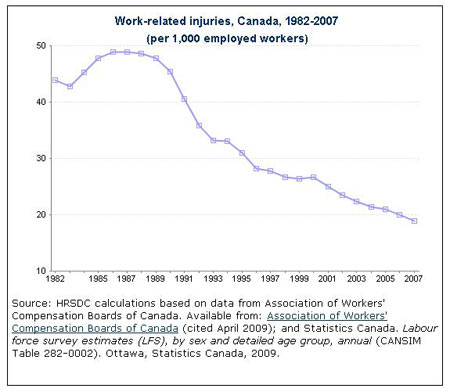
Pictured - Worker safety has been improving steadily
Whenever a work-related serious incident occurs it becomes national news. Even a minor incident involves multiple government and private agencies springing into action to identify where things went wrong.
These agencies set out to identify the lapse, correct the errors that caused the accident, and work with all stakeholders to ensure there isn’t a repeat of incidents. If a workplace incident results in a fatality, the effects are even more intense, and scrutiny of every workplace process will certainly be on the horizon.
When it comes to bulk bags, the obvious risk involved in handling and transporting materials is the sheer weight of the product being moved. A standard bulk bag has a weight capacity of 1,000 kgs, or 2,205 lbs. Custom bulk bag designs can vary in weight capacities, and some of our clients consistently use bags rated for 2,000 kgs, or 4,400 lbs.
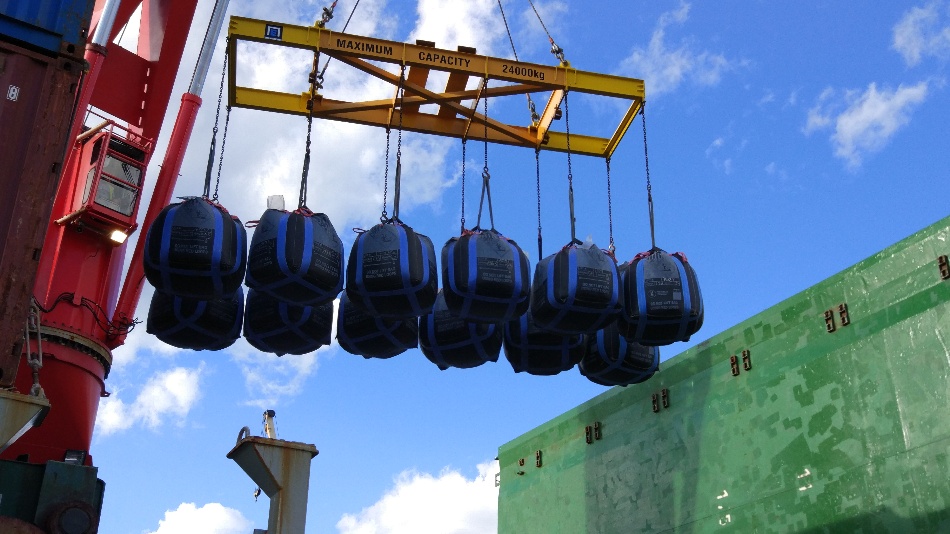
Pictured - 24 metric tonnes high overhead
When these incredible weights are suspended in the air around workers and equipment, safety is paramount. That’s where these FIBC (Flexible Intermediate Bulk Container) safety terms come into play.
Today we are going to take a closer look at the Safe Working Load (SWL) and Safety Factor (SF). Both of these terms should be part of your vocabulary if you are working with bulk bags of any size. Safety Factor can also be called the Safety Ratio, as it is literally a numerical ratio.
First, the SWL (Safe Working Load) of a bulk bag is the MAXIMUM safe weight carrying capacity of the bag itself. This means, the bulk bag was designed and manufactured to that specific specification. From the thickness of the fabric, to the width of the lifting loops, everything was engineered to withstand that maximum weight. When you’re hauling around thousands of pounds, it’s not “just a bag”.
A bulk bag with a SWL of 1,000 kgs (2,205 lbs) should never be filled with material that exceeds 1,000 kgs. You can figure out how much material will fit into a bag if you know the bulk density of your product. There are 27 cubic feet in a cubic yard, so multiply your bulk density by 27 and that is what a cubic yard will weigh.
For example, Fly Ash has a bulk density of 65 lbs per square foot. That means one cubic yard of Fly Ash would weigh 1,755 lbs. A bulk bag with a SWL of 2,205 lbs (assuming a cubic yard volume) will safely and efficiently handle that load.
Of course, you have to account for fabric expansion and how certain materials behave but, working with an experienced supplier such as MiniBulk will ensure a correct fit. In Canada, we use metric and imperial measurements interchangeably as well, so we are well versed in cubic yards or cubic meters.
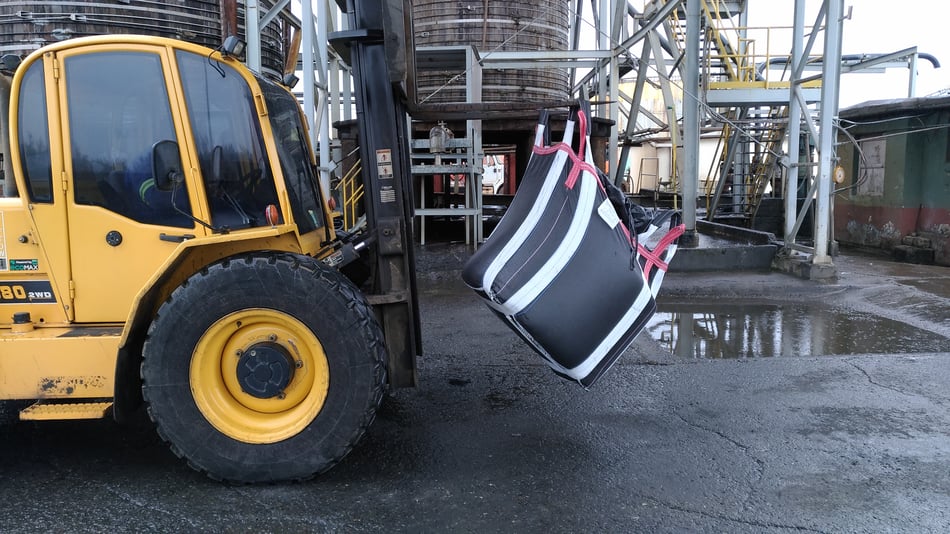
Pictured - One heck of a tough bag and don't try this at home
So the SWL is quite straight forward, what about the SF? Now this is where things get very interesting and the true marvel of FIBC engineering comes into play!
A standard bulk bag will have a Safety Factor or Safety Ratio of 5:1. In the simplest of terms, a 1,000 kg bag with a Safety Factor of 5:1 has been tested to carry 5,000 kgs before failure. Every standard stock bag we carry in our MiniBulk warehouse has a SF of 5:1 MINIMUM. Some countries allow a SF of 3:1, but most global standards are set at 5:1.
So how do we get to that number, and how do we prove it? Well, we prove it in the same place all engineered materials get tested; in the lab! So, put on your safety goggles and let me explain how it’s all done.
All of our stock bags in Canada have been designed and tested to meet and in most cases, exceed the 5:1 ratio. The 1,000 kg bag is designed on paper first.
Calculations are made that take into consideration the weight capacity required, the fabric weight, the stitching patterns, the weave of the fabric, the lift loops, the spouts and more. Once a design has been drawn up and approved, then a prototype is created to test on the lab rig.
The now fully realized bag is filled to its maximum weight capacity with a medium (usually polypropylene resin pellets) and then hung on a rack by the four lifting loops. A hydraulic press with a steel plate on the tip is then extended down into the bag to test the overall strength of the bag.
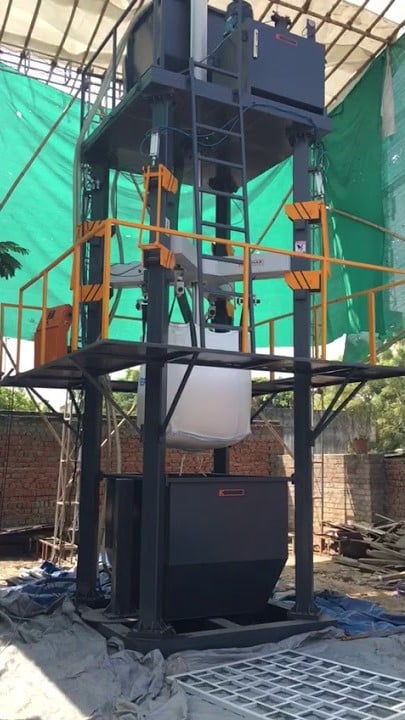
Pictured - One big rig by Armstrong
Here is a great video of a bag being tested to failure in the above testing rig. You never want to hear that "pop" in the field.
You might think that it has to hold up to 5,000 kgs worth of downward force and that’s all, but that is incorrect. That is actually known as the final “Peak Load” test but, before we get to that point, a 5:1 bag has to survive 30 cycles of 2,000 kgs BEFORE the final peak load test.
That’s right; it’s 2,000 kgs of downward force applied 30 times, THEN the bag has to sustain 5,000 kgs of pressure in order for the bag to pass inspection and become a viable and safe design. It’s amazing that a plastic bag weighing only 2 kgs itself can withstand more than 5,000 kgs of pressure.
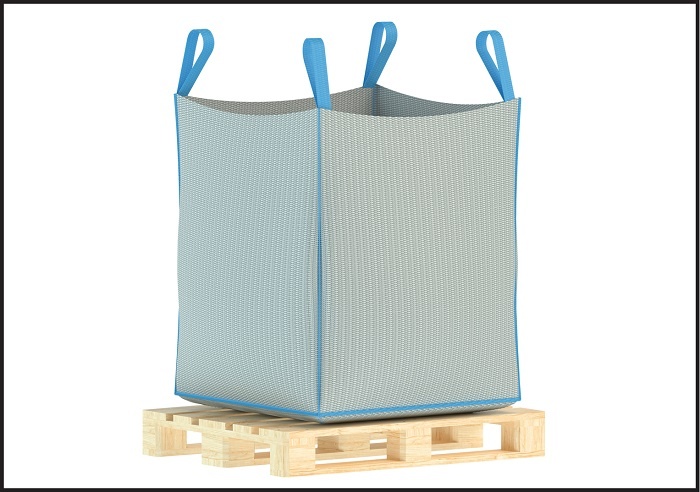
Pictured - A marvel of engineering disguised as a simple bag
A bulk bag with a SF of 5:1 is considered a single-trip, or one-way bag. It is manufactured to be filled and shipped once and not recommended for multiple use.
These standards were implemented in the mid 80’s by the EFIBCA (European Flexible Intermediate Bulk Container Association) and more recently entrenched by the ultimate ISO 21898 standard of bulk bag manufacturing.
Those 5:1 bags are really tough and durable but there are bags out there that are even tougher!
Another common Safety Factor is 6:1 and it applies to HazMat and multi-trip bags. We have great info on HazMat bags already, so let’s look into multi-trip bags today.
A multi-trip bag is just that; a bag that can be handled multiple times and often by different conveyance methods as well. The same design process is implemented as a 5:1 bag, but the testing is much more robust and demanding.
Again, the bag is placed in a rig, filled with a medium, and then hydraulically pushed to failure. The main difference is a 1000 kg bag must now withstand a minimum of 6,000 kgs of pressure instead of 5,000! In addition, the cycle test is now 70 cycles of quadruple the SWL!
A 1,000 kg 6:1 bag will be subjected to 4,000 kgs of pressure 70 times, followed by sustaining a peak load of 6,000 kg equivalent pressure… Incredible!
It’s not only just as simple as building a tougher bag. Often, conditions and circumstances of each unique client result in additional support required. Things like reinforced lifting loops, safety bands, loop sleeves, and other additional safety considerations may be needed. Working with a reputable bulk packaging supply company will ensure you have exactly what is required to cover efficiency and safety.
As with all safety requirements, once the supplier has done their part, it is up to the user to practice due diligence and make sure to follow the safety handling instructions printed on the labels of every bag in order to maintain a safe working environment.
If your ultra-tough, perfectly designed multi-trip bag has been stabbed clean through by a forklift tine, it’s not going to work no matter how well it was built! Being cautious of wear and tear or any kind of damage to the bags along the way will help to ensure a safe trip to the bag’s final destination.

